History: Photos of Historic Long Island Homes & Buildings in Suffolk County
Most of the photos come from the Historic American Buildings Survey (HABS), a program of the National Park Service established for the purpose of documenting historic places. Records consist of measured drawings, archival photographs, and written reports.
Below we present some of Suffolk County’s historic places and a little bit of their history.
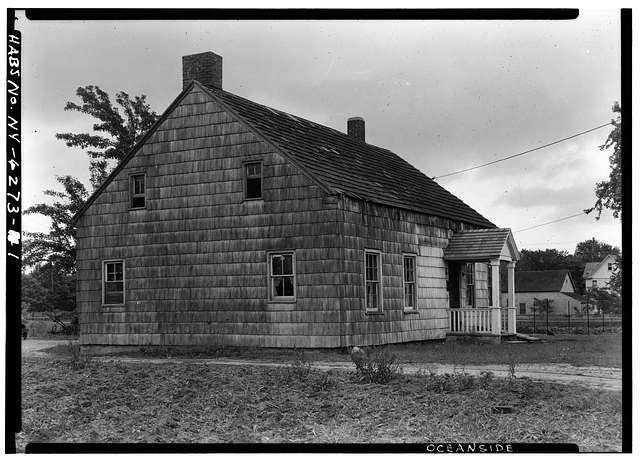
Photo: No known restrictions on images made by the U.S. Government. Historic American Buildings Survey.
House, Huntington, Suffolk County, NY.

Photo: No known restrictions on images made by the U.S. Government. Historic American Buildings Survey.
Benjamin Thompson House, Setauket, Suffolk County, NY.
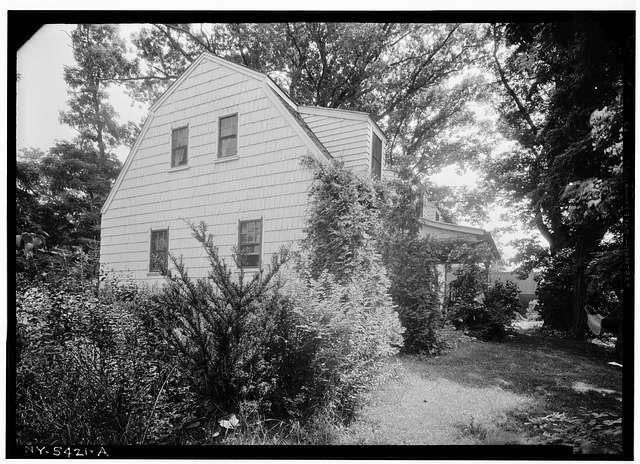
Photo: No known restrictions on images made by the U.S. Government. Historic American Buildings Survey.
Moses Mills House, Smithtown, Suffolk County, NY. Survey shows home was built in 1780.
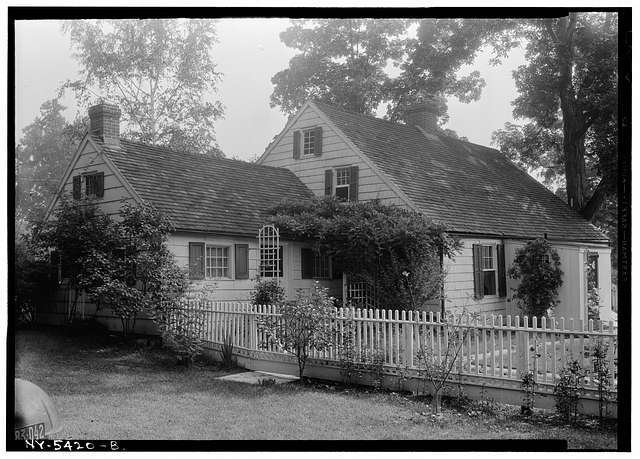
Photo: No known restrictions on images made by the U.S. Government. Historic American Buildings Survey.
Suydam House, Centerport, Suffolk County, NY. From the Greenlawn Centerport Historical Association website: The Suydam House is the GCHA's c1730 historical house and museum. Research has revealed that the house was originally a one room dwelling. It was enlarged c. 1760 to include a lean-to kitchen. Towards the end of the 18th-century, (c. 1790), the house was extended to the east, the entire structure was covered by a gabled roof and a central chimney which vented three fireplaces was built. During the next 200 years, the addition to the west of the house of another 18th-century building was the only structural change. This building, used as a workshop, was probably added in the 1830s. After nearly 150 years of single-family ownership, the Suydam Homestead was sold in the 1950s.
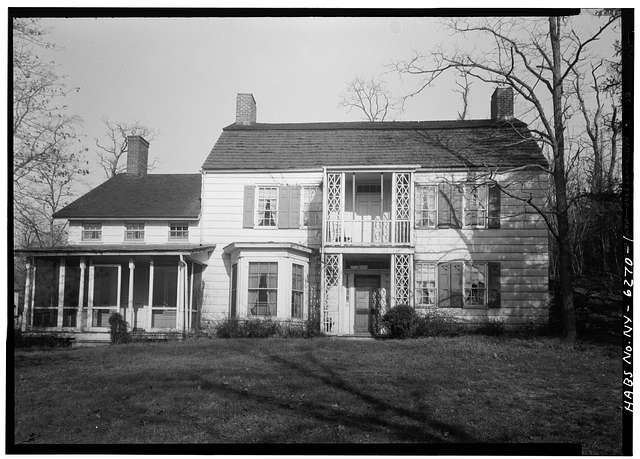
Photo: No known restrictions on images made by the U.S. Government. Historic American Buildings Survey.
New Mills House, Smithtown, Suffolk County, NY. Located at the north entrance of Blydenburgh park. Read more about it here.
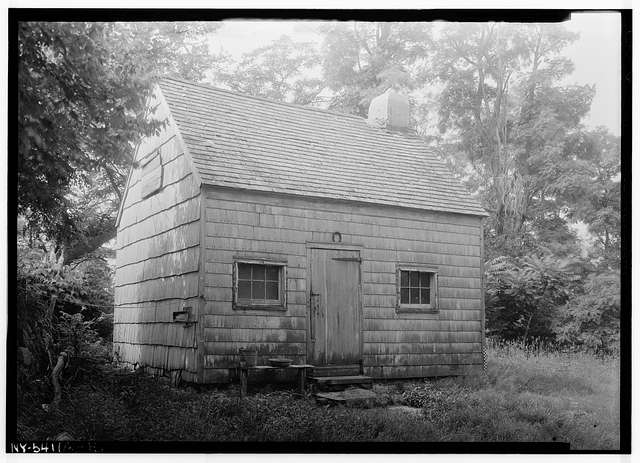
Photo: No known restrictions on images made by the U.S. Government. Historic American Buildings Survey.
According to one source, the Caleb Smith slave house a 1790 census lists four slaves who occupied the one-room structure. Due to the fact that the structure was built so close to the road, it is speculated that was designed better than most slave quarters with the idea that passersby would see it from the road. Most likely, the family’s domestic servants were housed there.
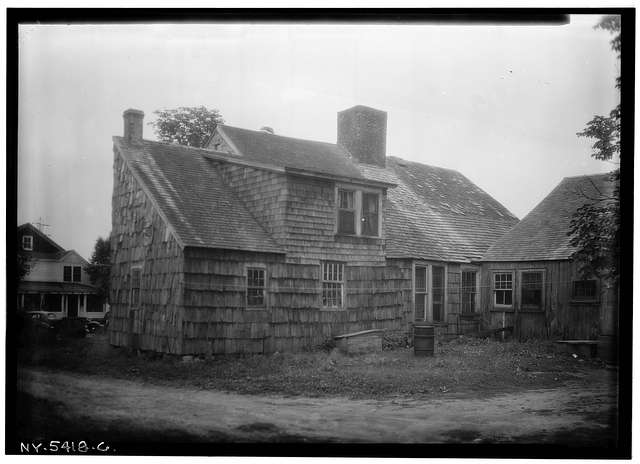
Photo: No known restrictions on images made by the U.S. Government. Historic American Buildings Survey.
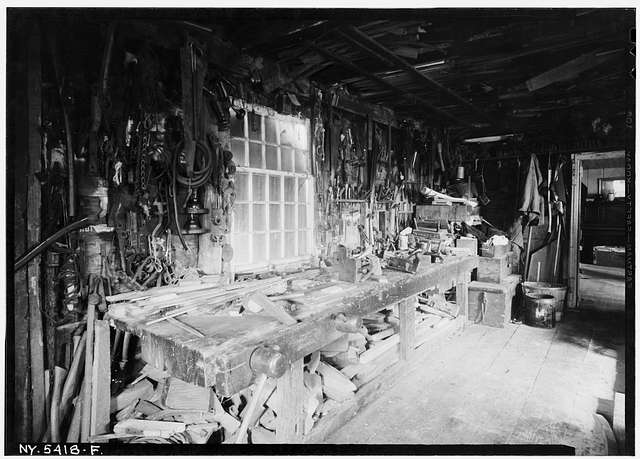
Photo: No known restrictions on images made by the U.S. Government. Historic American Buildings Survey.
Dominy House, North Main Street, East Hampton. The Southampton Press said that the house was “an excellent example of an 18th-century lean-to house” and dates back to 1715. “From 1760 until 1840, Nathaniel Dominy IV (1737-1812), father; Nathaniel V (1770-1852), son; and Felix (1800-1868), grandson, worked in the woodworking shop on the northeast side of the house (circa 1745-50) making furniture, and in the clock shop (1798) at the opposite end of the house, where they produced clocks and performed watch repairs,” the paper reported. Read the full story here.
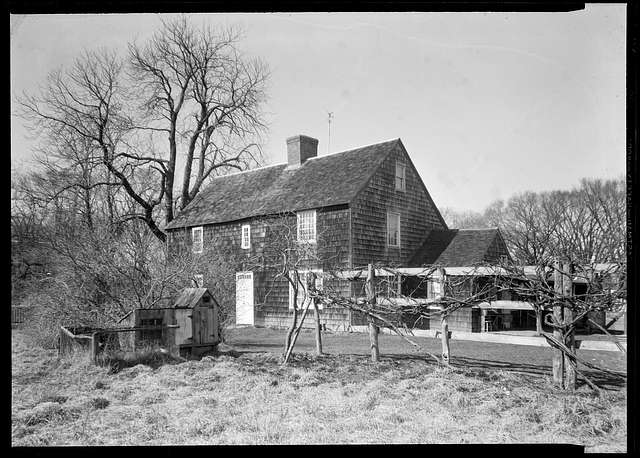
Photo: No known restrictions on images made by the U.S. Government. Historic American Buildings Survey.
Mulford House, James Lane, East Hampton, Suffolk County, NY. Summary: Significance: It was probably built by Josiah Hobart about 1680, but was exchanged for land belonging to Samuel Mulford in 1698. The house descended in the Mulford family until the mid-19th century, when it passed briefly into Hedges family ownership. Repurchased later in the century by Samuel Green Mulford, the house remained in the Mulford family until its acquisition by the East Hampton Historical Society in 1948. Restoration of the frame exterior cladding, chimney, and interior fabric was carried out in 1950 under the direction of supervising architect Aymar Embury II.
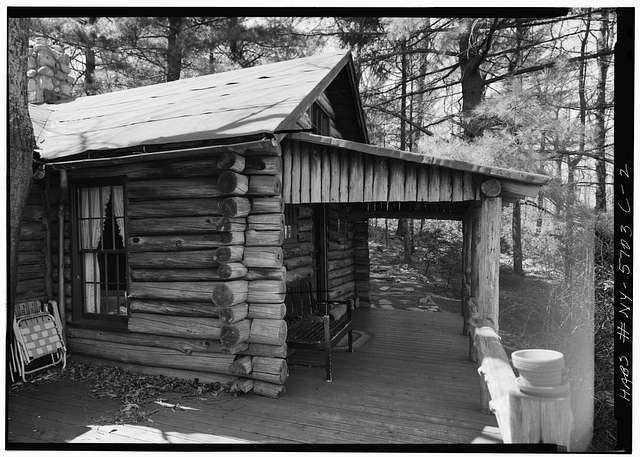
Photo: No known restrictions on images made by the U.S. Government. Historic American Buildings Survey.
Laurel Lodge, Log Cabin, Arbutus Road, Greenlawn, Suffolk County, NY.
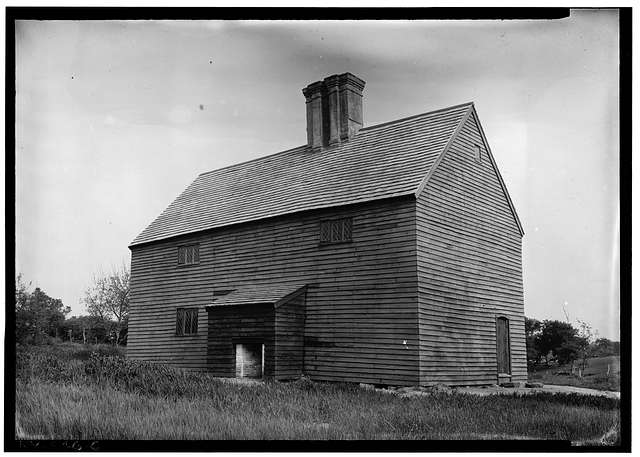
Photo: No known restrictions on images made by the U.S. Government. Historic American Buildings Survey.

Photo: No known restrictions on images made by the U.S. Government. Historic American Buildings Survey.
Horton-Wickham-Landon House, Kings Highway (moved from NY, Southhold), Cutchogue, Suffolk County, NY. From the National Register of Historic Places website: Statement of Significance (as of designation - November 5, 1961) - Erected in 1649 by John Budd, who later gave it to his daughter as a wedding present, this house is notable as one of the most distinguished surviving examples of English domestic architecture in America. Construction details, in particular the casement window frames, reflect the work of a master builder. The house was restored in 1940.
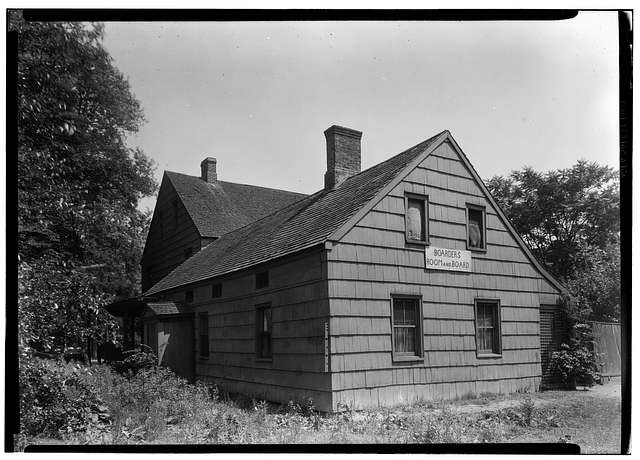
Photo: No known restrictions on images made by the U.S. Government. Historic American Buildings Survey.
Nat Conklin House, 280 Deer Park Avenue, Babylon, Suffolk County, NY. From the Village of Babylon website: By 1815, the house went through several changes of owners. The Conklin House was moved from Main Street to its present location in 1871, the site of the Washington Hotel complex operated by the owner, John Lux.
By 1882 after a new owner and a mortgage default, the house went into a long decline and perhaps even remained empty for many years.
It wasn't until 1915 that the house was taken over by Mary Mentz who operated it as a boarding house for many years. Some of the residents were salesmen who came to town on the newly established Long Island Railroad and others were construction workers, building Sunrise Highway.
In 1945, descendents of the Sammis family, owners of the now vacant house, deeded it over to the American Red Cross. It was used by the Red Cross as a headquarters until 1989 when it was going to be sold and possibly demolished. The Village of Babylon purchased the house and began restoration in 1990. The home as it stands today is the result of countless hours of research and work and reflects the history of a home and a Village.
